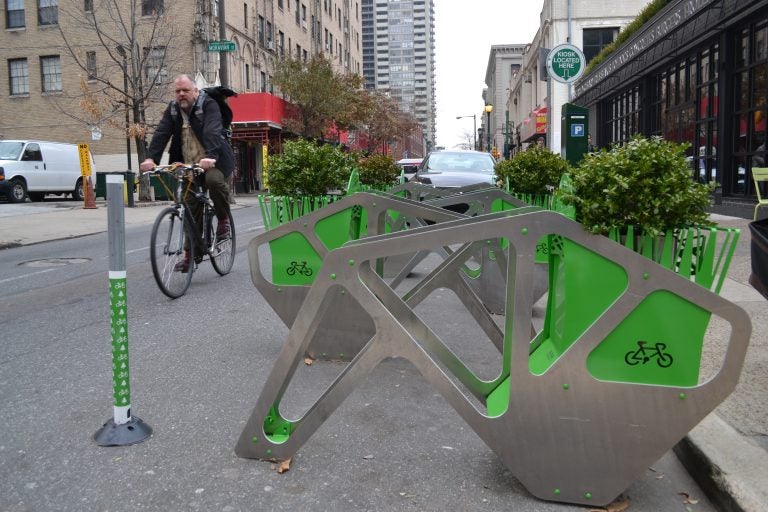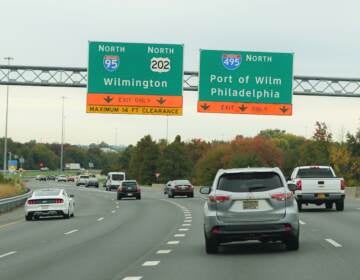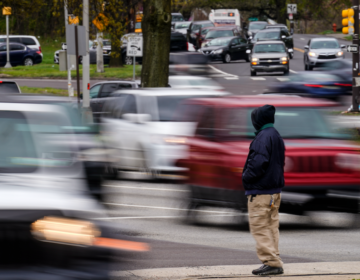City seeks to stop cars from parking illegally in front of fire hydrants by parking bikes there instead
The $7,500 grant from Philadelphia’s Innovation Fund will help develop a prototype bike corral

Shake Shack bought and installed a bike corral for its Center City location. (PlanPhilly)
This story originally appeared on PlanPhilly.
—
Drivers hate to get parking tickets when they don’t notice an open spot isn’t actually a spot. Cyclists curse when all the bike racks in an area are full. And you don’t want to see what a firefighter will do to a car blocking access to a fire hydrant.
Thanks to a small grant announced on Wednesday, city officials think they might have a solution to all three of those problems.
Think of it as getting three flipped birds with one stone.
The $7,500 grant from Philadelphia’s Innovation Fund will help the Office of Transportation and Infrastructure Systems (OTIS) develop a prototype bike corral to “prevent illegal car parking in front of a [fire] hydrant and creatively meet an increased demand for bike parking in Philadelphia.” The project is one of seven to receive grants from the Innovation Fund this week.
The fire-hydrant bike corral effort will be the first of its kind, as far as anyone knows.
“In our research, we haven’t seen it implemented elsewhere,” said Kelley Yemen, the city’s director of complete streets.
Yemen said the initiative started with the Philadelphia Parking Authority, and that the Philadelphia Fire Department will also partner in the design effort.
When cars park in front of a hydrant, they slow firefighters responding to a blaze. By blocking the space with just about anything, you can stop drivers from making that mistake.
The trick will be to design a corral where locked-up bikes won’t also prevent access to hydrants. Yemen said the design team, which will include representatives from both the PPA and the Fire Department, will aim to create an easily-replicable prototype (or two) that could, one day, accompany hydrants all across the city. Once they have the prototypes made, Yemen said, the city expects to test them out in public and solicit feedback.
There’s no timeline yet on when the work will begin or end.
If the idea works, the city will then start to consider how to implement it more broadly — whether by encouraging local businesses and residents to build them, which is the current bike corral policy, seeking grant funding, or dedicating local funds.
Conventional bike corrals cost around $2,000.
The Innovation Fund is run out of the city’s small Office of Innovation Management and gets its money from the Mayor’s Fund of Philadelphia, a city-run non-profit that the current administration has sought to reform following reports of misspent funds. The Mayor’s Fund is itself funded by revenues from the Philadelphia Marathon.
This isn’t the first time Philadelphia has looked into designing a new kind of bike rack: In 2014, the city’s Office of Arts, Culture and the Creative Economy partnered with the Bicycle Coalition of Greater Philadelphia to hold a bike rack design competition. Artists were given between $5,000 and $15,000 per rack (depending on the size), which now adorn parts of Center City. The more utilitarian, standard bike rack shaped like an upside down ‘U’ cost about $150 each. “One wonders whether the city would have been better off spending the $100,000 in donated money for the competition on more U racks,” Philadelphia Inquirer architectural critic Inga Saffron wrote at the time.
WHYY is your source for fact-based, in-depth journalism and information. As a nonprofit organization, we rely on financial support from readers like you. Please give today.






